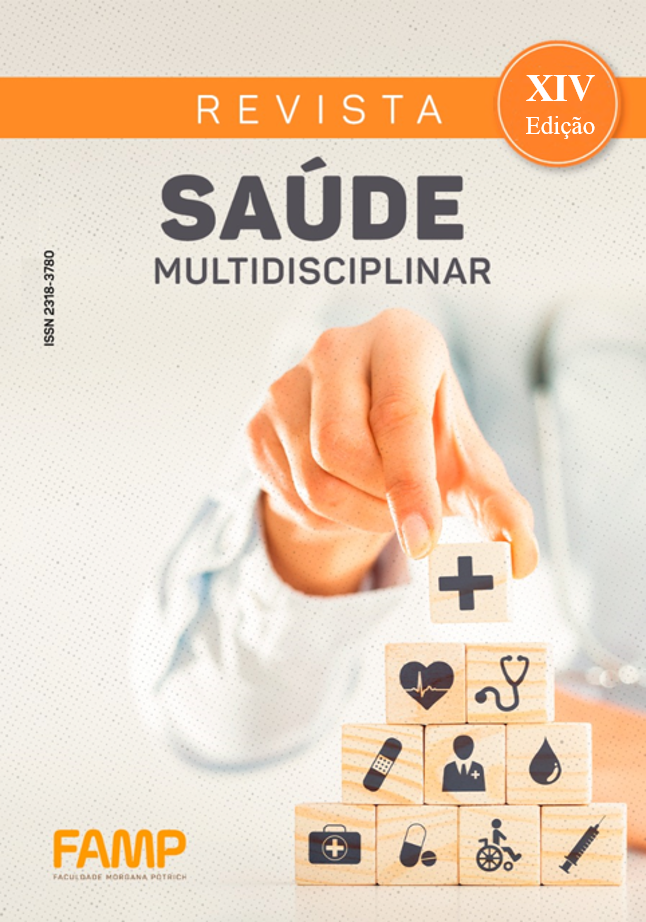Silicone Disease (ASIA) - A Case Report
DOI:
https://doi.org/10.53740/rsm.v14i1.632Keywords:
Autoimmune Diseases, Breast Implantation, Plastic Surgery, SiliconesAbstract
The introduction of silicone in aesthetic procedures has raised concerns regarding the possible impacts of silicone on the body. Breast prostheses are still one of the most commonly performed plastic surgeries in Brazil and worldwide despite being linked to numerous complications. Additionally, the use of silicone has been correlated with autoimmune syndrome induced by adjuvant (ASIA), whereby an inflammatory response occurs due to the presence of a substance capable of increasing the immunogenicity of an antigen. This study addresses one such case of ASIA, also known as silicon disease, in order to assess its impact on the daily lives of patients who have undergone a breast prosthetic procedure. Fourteen articles relating to the patient’s case report were analyzed, collected from various platforms, including PUBMED, Scientific Electronic Library Online , Science Direct, and Google Academic. The patient had undergone breast augmentation in 2000. Two years later, she began experiencing symptoms of myalgia, arthralgia, and depression, implicating fibromyalgia. After removal of the prosthesis, the material was biopsied, and it was concluded that an immunological reaction had occurred due to the implant. Since little is known about ASIA, this study aims to increase the understanding of the syndrome and to assist future diagnostics.
References
Caravantes-Cortes, M. I., Roldan-Valadez, E., Zwojewski-Martinez, R. D., Salazar-Ruiz, S. Y., Carballo-Zarate, A. A. (2020) Breast prosthesis syndrome: pathophysiology and management algorithm. Aesthet Plast Surg. 44, 1423-1437. doi: 10.1007/s00266-020-01663-9.
Carrillo, L. G. D., Aguilar, J. G. A. (2022) Síndrome autoinmune inflamatorio inducido por adyuvantes (ASIA): Shoenfeld syndrome. Acta Médica Grupo Angeles, 96-98. https://doi.org/10.35366/103566.
Colaris, M. J. L., Van Der Hulst, R. R., Tervaert, J. W. C. (2017) Vitamin D deficiency as a risk factor for the development of autoantibodies in patients with ASIA and silicone breast implants: a cohort study and review of the literature. Clin Rheumatol. 36, 981-993. doi: 10.1007/s10067-017-3589-6.
Fernández-Palma, C. (2018) Mamoplastia de aumento: abordaje fisioterapéutico: artículo de revisión. Rev. Cient. Arbitrada Investig. Salud GESTAR ISSN: 2737. 6273, 2-9. https://doi.org/10.46296/gt.v1i1.0001.
García, S., Lena, T. (2021) Enfermedad Asociada A Implantes Mamarios: ¿ Cuál Es la Evidencia Actual?. Cirugía Plástica Ibero-Latinoamericana. 47 pp, 119-133. https://dx.doi.org/10.4321/s0376-78922021000200003.
International Society of aesthetic plastic surgery (ISAPS). The international study on aesthetic/cosmetic procedures performed in 2020. United States: International Society of aesthetic plastic surgery. Available at at. https://www.isaps.org/wp-content/uploads/2020/12/ISAPS-Global-Survey-2019-Press-Release-Portuguese.pdf [Accessed 02 September 2021].
Maijers, M. C., de Blok, C. J., Niessen, F. B., van der Veldt, A. A., Ritt, M. J., Winters, H. A. et al. (2013) Women with silicone breast implants and unexplained systemic symptoms: a descriptive cohort study. Neth J Med. 71, 534-540. https://pubmed.ncbi.nlm.nih.gov/24394743/.
Matias, I. S., et al. (2021) Silicone breast implantation and ASIA syndrome: a review of the literature Silicone. Braz J Dev. 7. https://doi.org/10.34117/bjdv7n7-127.
Mendonça Munhoz, A., Santanelli di Pompeo, F., De Mezerville, R. (2017) Nanotechnology, nanosurfaces and silicone gel breast implants: current aspects. Case Reports Plast. Surg. Hand Surg. 4, 99-113. doi: 10.1080/23320885.2017.1407658.
Miranda, R. E. D. (2020) En bloc explant of silicone breast prostheses and quality of life and evolution of ASIA syndrome symptoms. Rev Bras Cir Plast. 35, 427-431. doi: 10.5935/2177-1235.2020RBCP0076.
Pavlov-Dolijanovic, S., Vujasinovic Stupar, N. (2017) Women with silicone breast implants and autoimmune inflammatory syndrome induced by adjuvants: description of three patients and a critical review of the literature. Rheumatol Int. 37, 1405-1411. doi: 10.1007/s00296-017-3731-4.
Shoenfeld, Y., Agmon-Levin, N. (2011) ‘ASIA’- autoimmune/inflammatory syndrome induced by adjuvants. J Autoimmun. 36, 4-8. doi: 10.1016/j.jaut.2010.07.003.
Sparice-Pulido, E., et al. (2018) Síndrome autoinmune/inflamatorio inducido por adyuvantes: reporte de un caso. Acta BIOCLINICA. 8. https://www.academia.edu/74108794/S%C3%ADndrome_Autoinmune_Inflamatorio_Inducido_por_adyuvantes_Reporte_de_un_caso?sm=b.
Tervaert, J. W. C. (2018) Autoinflammatory/autoimmunity syndrome induced by adjuvants (ASIA; Shoenfeld's syndrome): a new flame. Autoimmun Rev. 17, 1259-1264. 10.1016/j.autrev.2018.07.003.
Additional Files
Published
How to Cite
Issue
Section
License
Copyright (c) 2023 REVISTA SAÚDE MULTIDISCIPLINAR

This work is licensed under a Creative Commons Attribution-NonCommercial-NoDerivatives 4.0 International License.









